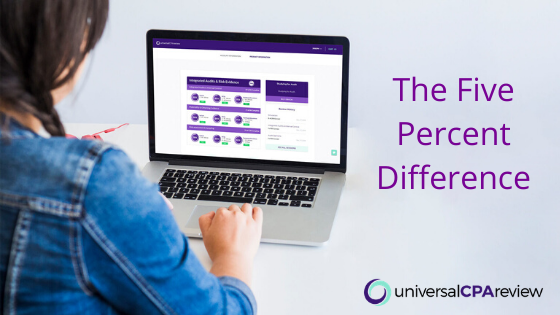Knowing exactly what to expect regarding the format of the CPA exam helps to take away some of the unpredictability on test day, which in turn reduces stress. The four sections of the CPA exam are AUD, REG, FAR, and BEC. The format of the four tests are essentially the same as each other, which a slight difference in the BEC exam. The format of each exam is universal, giving candidates one less thing to worry about on test day.

Each exam is broken out into five sections referred to as testlets. The first two testlets you will encounter on all four exams consist of multiple-choice questions, that largely test recognition of key concepts. The next three testlets for AUD, REG, and FAR are task-based simulations, which are essentially mini case studies that require candidates to apply real life skills needed in work-related situations. The one exam with a slightly different structure compared to the other three is BEC. After the multiple-choice testlets follows two task-based simulations and ends with a written communication task. The written communication task requires candidates to read and appropriately respond to a scenario using complete and professional writing skills.
Prometric Experience:
Upon entering the computer test center, you will be given two white boards and one dry erase marker. The white boards act as scratch paper to solve problems. My advice is to regurgitate as much information as you can (acronyms, formulas, key words you struggle with) onto the white board as soon as you sit down. As you get further into the test your brain gets cloudier and little hints and tricks you left for yourself while you were still clear minded could be a game changer. If you need a new board simply raise your hand and the test monitor will bring you one.
Take Suggested Break:
Each section of the CPA exam is long and mentally exhausting. You can elect to take a break between the first and the second task-based simulation. Theoretically, this should be around the half-way point of the exam. The clock will stop for 15 minutes and you can step outside the testing area to clear your mind. Personally, I kept a small snack in my locker (a banana and cup of coffee in a thermal mug) and tried to think of something mindless to give my brain a break. I also always used the restroom. Additional breaks can be taken between each testlet, but the clock will not stop. Every second counts, so I personally advise candidates to only take the midway point break that stops the clock. However, if you prefer to take multiple breaks than do what works best for you.
Bottom Line:
So much of the test is unpredictable, so controlling the parts that you can is crucial. By knowing, and being comfortable with the format of each exam, you give yourself one less thing to stress about. My advice is to find a routine that works for you (before you sit for the first time) and be consistent with that routine through every test.

